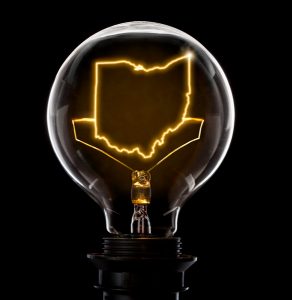
Proposed Rules Put Financing at Risk
The 20.6 MW offshore wind farm that has been in the works since 2009 has two newly proposed rules to contend with.
The Ohio Power Siting Board (OPSB), which regulates siting of any wind facilities larger than 5 MW, recommended the project be approved with two significant restrictions to operation. The OPSB wants control of facility operations if the farm has an impact on any wild animal and wants wind turbines to be shut down overnight for one year until experts determine if methods to monitor the impact on bats and birds are working.
The Lake Erie Energy Development Corp. says the new rules will make financing the project difficult. If the new restrictions remain, the OPSB could potentially shut down the wind farm after construction without due process, making an investment in the project a great risk.
The Battle for Cheap Energy: Wind vs. Coal
The key players in the battle over the Lake Erie Wind Farm are familiar foes: big coal, or Murray Energy, and renewables, or Lake Erie Energy Development Corp. with partner Fred. Olsen Renewables.
LEEDCo and partner are directly involved in the project and say that Lake Erie has a tremendous potential to provide green energy for Ohio with offshore windfarms. Studies and analysis so far have supported LEEDCo’s claims that the wind farm poses little or no threat to the environment and wildlife.
On the other hand, Murray Energy—the largest privately-owned coal company in the United States—is bankrolling the opposition to the project without officially intervening in the process. Had Murray Energy attempted to directly intervene in the state certification process, it likely would have been blocked, considering that the wind energy project is in direct competition with the coal company. Opposition to the farm says wind energy is more expensive and less reliable than coal and the project potentially endangers wildlife.
Ohio residents interested in cheap energy and lower electric bills will be interested to know the true cost of these two energy sources. According to Lazard’s Levelized Cost of Energy Comparison, coal costs $60-$143 per MW while wind costs $30-$60 per MW. That means that with more wind energy on the grid, the cost of electricity goes down.
The Future of the Wind Farm Project and Cheaper Energy in Ohio Is Uncertain
Hearings for the energy project are scheduled to take place this month. On the LEEDCo side, executives are certain that keeping the new rules would kill the project considering it is largely funded by private investors.
Shutting the project down would be a win for Murray Energy and coal, establishing a huge hurdle for renewable energy competitors in Ohio now and in the future.
Without new sources of cheap energy, Ohio residents can expect electric rates to increase, according to the EIA. Because the outcome could directly affect Ohio electric rates, it will be important to follow this story as it develops.
Smart energy consumers should compare Ohio electric rates now, switch energy suppliers, and lock-in a low rate before prices increase. Shopping at Ohio Energy Ratings makes comparing electric plans apples-to-apples fast and easy. Find the best electric company when you visit us here: https://www.ohenergyratings.com/electricity-rates.
